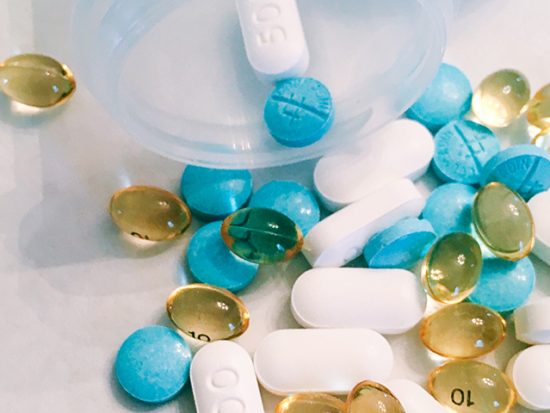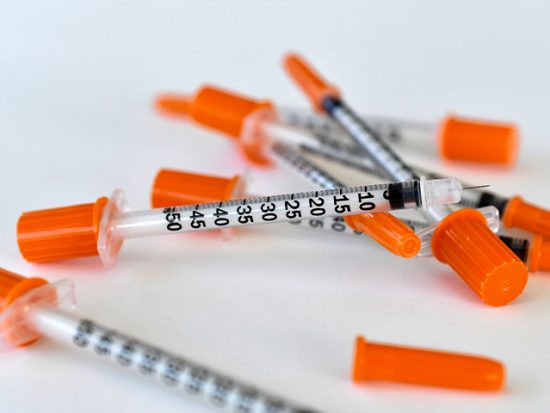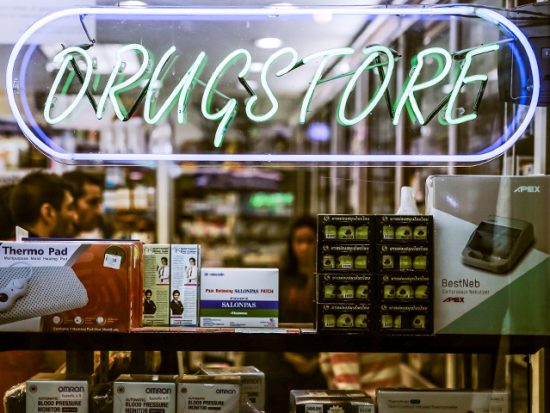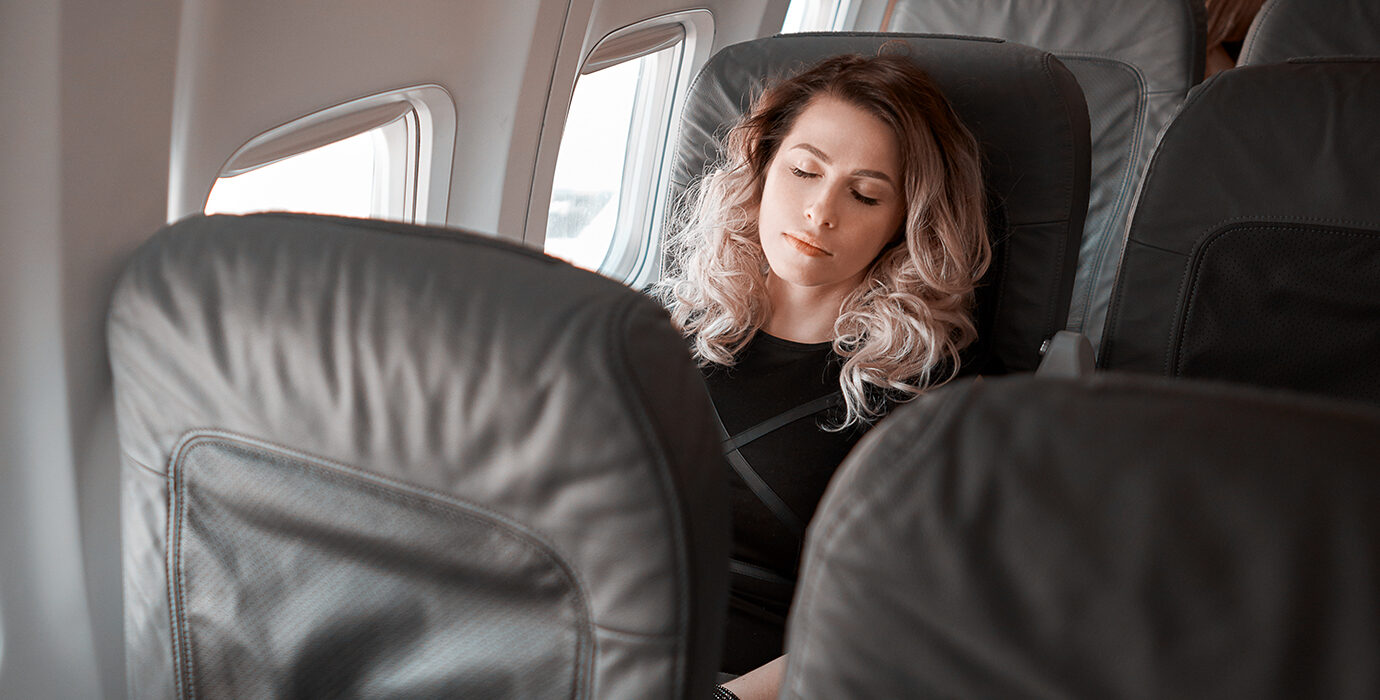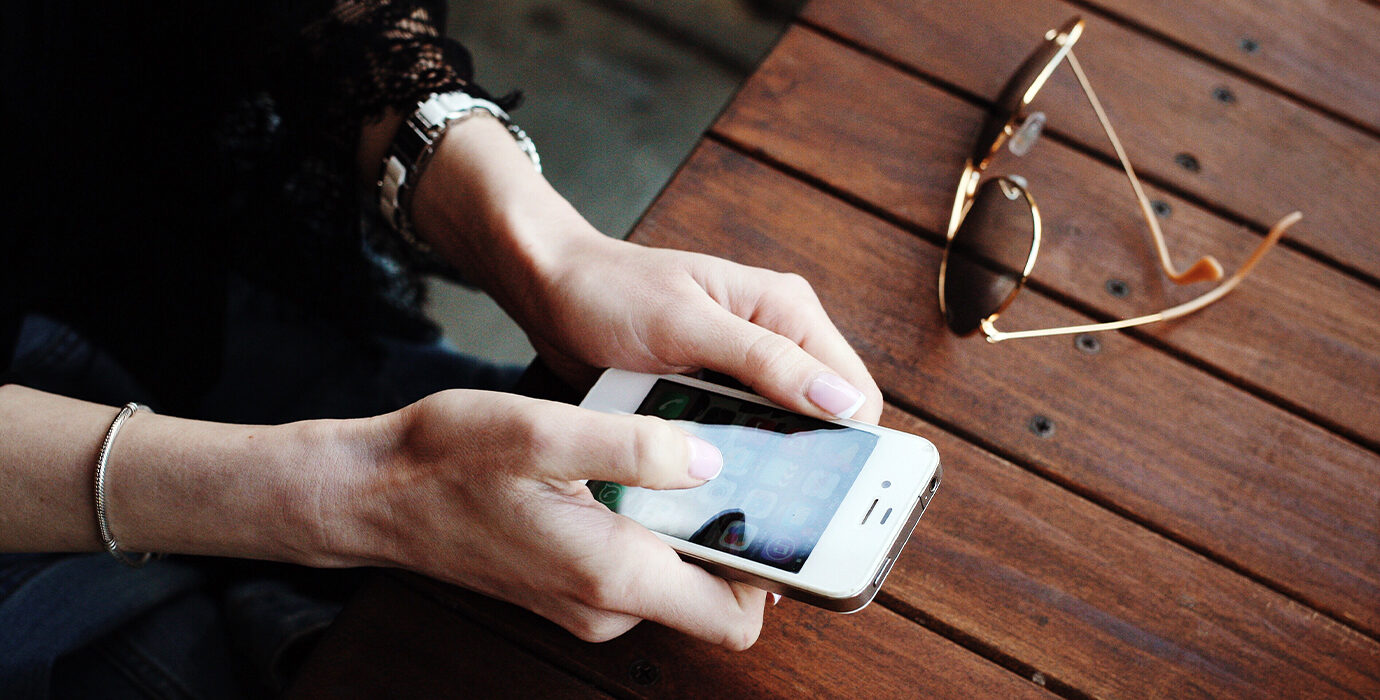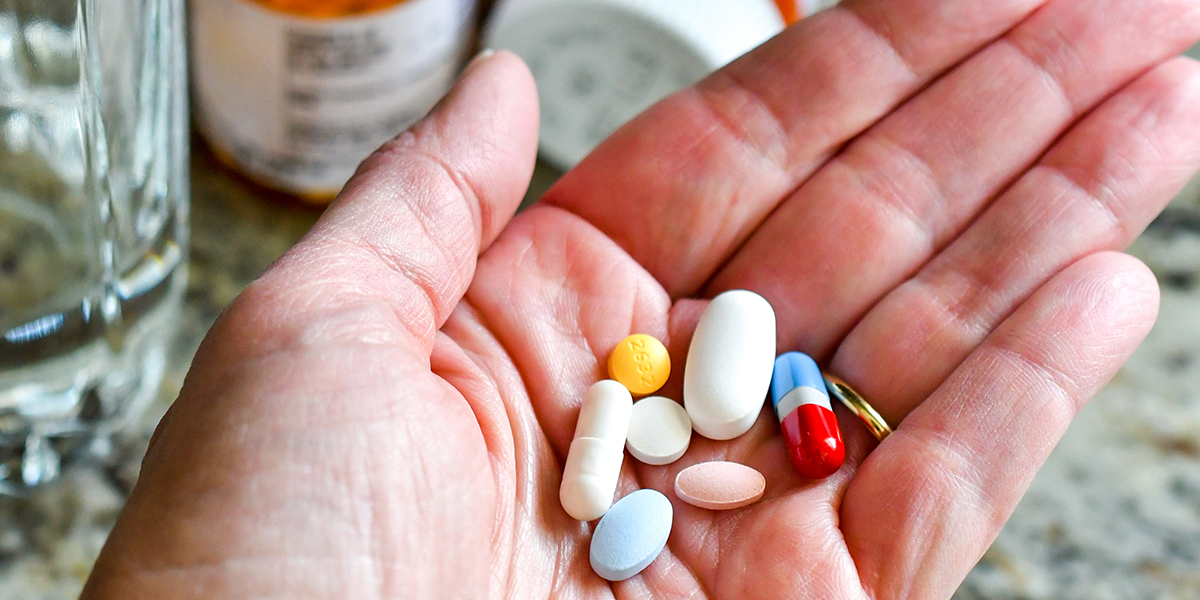
Everything You Need to Know to Travel With Medications or Medical Supplies
Traveling with medications and medical supplies doesn’t have to lead to headache or heartache. Generally speaking, the Transport Security Administration (TSA) wants you to travel with everything you need to be healthy—from canes to cannabis—provided you can follow their guidelines. To help you pack those critical items, we’ve combed the rules to answer the most commonly asked questions so you can fly worry-free. Read on for our guide to everything you need to know to travel with medication or medical supplies. And for anything that isn’t covered below, you can reach out to the agency’s helpline, TSA Cares (855-787-2227) or hop on Twitter and tweet at @AskTSA.
TRAVELING WITH PILLS AND GENERAL MEDICATIONS

Can I take my medication abroad?
The short answer, according to the Centers for Disease Control, is it depends. Rules vary by country, so what might be legal in the United States could be banned or prohibited elsewhere. For example, Japan bans any medication that contains more than 10 percent of pseudoephedrine, which includes over-the-counter medications like Sudafed. To be absolutely safe, check the foreign embassy of the country or countries you’ll be visiting well in advance of your trip, or search the International Narcotics Board, which includes information about controlled substances around the globe. You’ll want to allow plenty of time to consider alternatives to your medication, or secure a medical certificate from your healthcare provider, in the event that the substance you take is considered illegal at your destination.
Do medications need to be in their original container when flying?
You are not required to travel with medicine in its original container when flying. However, the US Customs and Border Protection recommends that you do so, as the original containers, including the doctor’s prescription, may cut down on excess scrutiny at security and reduce the risk of misunderstanding. The law enforcement agency also recommends that you travel with a limited supply of medication (no more than 90 days’ worth). Note that you’ll also need a doctor’s note or valid prescription when traveling into the U.S. with medication.
How should I pack and label my medication to avoid issues at the airport?
Keep your meds in the original packaging or container, if possible. Make sure the doctor’s prescription, the medication’s name, and its recommended dosage are clearly legible. If you can, you should also save and pack the inserts that come with your meds, including ingredients. One good thing to note: Medication is not subjected to the TSA’s 3-1-1 rule, so liquid, gel, or cream meds can be carried in in packaging above 3.4 ounces.
As a bonus, you could also print out and complete the TSA Notification Card for Individuals with Disabilities and Medical Conditions. This card helps you notify security officers of any unique circumstances.
Can I put drugs in my checked luggage?
Yes. You can take your meds with you as long as they’re screened at the airport as either checked or carry-on luggage. Remember to pack whatever dose you need during the flight in your carry-on. As noted above, medication isn’t subject to the TSA’s 3-1-1 rule.
Do I have to declare prescription drugs at the airport?
No, you do not need to declare prescription drugs at the airport, nor are you required to inform a TSA officer about your medication—unless you’re traveling with liquid medication. You can travel with any amount of medication in solid form, but you’ll need to inform the TSA agent about your liquid medication before entering security as an FYI. You’re allowed to carry more than 3.4 ounces of liquid medication in “reasonable quantities” for your flight. All medication must be screened before boarding.
Can I travel with someone else’s prescription medication?
Generally speaking, you cannot travel with someone else’s prescription medication. There are exceptions, of course, such as a parent or guardian who has a child’s medication, or a caregiver/family member traveling with an incapacitated individual. However, toting prescription medication that doesn’t belong to you or hasn’t been prescribed to you in name can be considered drug trafficking, which is obviously illegal.
Do I need a doctor’s letter to travel with medication?
While you don’t need a doctor’s letter to travel with medication, having one on hand can definitely help. The letter should explain what the medication is, why it was prescribed, and how it should be used. Double-check that your name as used by your doctor in her letter matches the name on your passport. If you’re going abroad, try to get the letter translated into the primary languages of any country where you’ll be traveling.
Do airport X-rays affect medication?
No. According to the folks at both Harvard Medical School and the FDA’s Center for Biologics, the tiny doses of radiation emitted at airport security won’t harm the vast majority of medications. If you prefer that your medication not be scanned for whatever reason, you may ask for a manual inspection of your meds while the rest of your stuff goes through the scanner.
Do four-ounce liquid restrictions still count toward prescription medication?
Nope. The TSA lets you travel with unlimited quantities of medication in pill or solid form, as long as your medication goes through the security scanner. You’re also allowed to take “reasonable quantities” of liquid medicine, even if those quantities are in excess of the 3.4-ounce limit. The same goes for gels, pastes, and creams. However, you do need to tell security officers about any liquid medication.
Can I pack my medical marijuana?
Yes! You can pack your medical marijuana and cannabis-infused products as long as you pack your doctor’s letter as well. Although TSA officers are focused on the safety of airline passengers (versus ferreting out drugs), they may refer passengers traveling with illegal substances to law enforcement officers. Avoid any confusion and make sure to have the right documentation on you at all times.
TRAVELING WITH MEDICAL DEVICES AND EQUIPMENT

Do medical devices count as a carry-on?
No, your medical device doesn’t count as a carry-on, assuming it meets the normal carry-on specifications (i.e. it can fit under the seat, in the overhead, or in a special storage area on the plane). If it’s too big to fit in the cabin, your medical device will travel as cargo at no extra cost.
Can I travel with a CPAP machine?
Yes, you can travel with a Continuous Positive Airway Pressure (CPAP) machines (more info here). The U.S. Department of Transportation considers a CPAP machine to be an assistive device, and they allows all passengers who require an assistive device to travel with it. You can bring it into the cabin of the plane, assuming it can fit under the seat in front of you, in an overhead compartment, or in a designated storage area; you’re also allowed to use your CPAP machine during your flight.
Can I bring a nebulizer or an inhaler on a plane?
Yes, indeed. You can bring your nebulizer or inhaler with you on the plane as a carry-on. However, your device may be subject to extra screening by a TSA agent, in addition to the usual X-ray screening. Note that any liquids used in your nebulizer or inhaler are not subject to the 3-1-1 rule.
Do airlines charge extra for medical equipment?
Nope, airlines don’t charge extra for medical equipment. In the event that your medical equipment cannot be stowed in the cabin, the airline will put your device in the cargo hold. You can pick it up at your destination at the baggage claim or on the jet way. Just keep in mind, if you store this item in a bag or piece of luggage, that bag may count toward your checked baggage and could be subject to fees, say, if it goes over the weight limit for a carry-on.
Can I take medical needles on a plane?
Not to worry, the TSA lets you take medical needles onto your flight. It’s a good idea to notify a TSA officer if you’re traveling with needles, such as a blood sugar test kit or an EpiPen. You can take unused syringes with you as long as you’re also taking injectable medication like insulin along, preferably with labels or a doctor’s note. You can also take used syringes with you in a special hard-sided disposable container.
Can I travel with a pill-cutter on a plane?
Yes, you can take a pill-cutter on a plane, either in your carry-on or as checked baggage. That said, packing a pill-cutter in your pocket might look a little weird. As is the case with many medical items, you’ll be subject to less scrutiny if you’re also traveling with pills and a doctor’s note carefully outlining your diagnosis, medication, and required dosage. To avoid any hassle, you could opt to split your pills before you board the plane.
Can I fly with crutches, and do crutches count as a carry-on?
Yes, you can bring crutches in your carry-on or as checked luggage. If you need crutches while traveling—that is, as you’re moving through the airport—your crutches must be screened by the X-ray machine. If you’re unable to stand or walk through the body scanner, you may receive a pat down instead. Happily, your crutches don’t count as a carry on.
Are knee scooters allowed on airplanes?
Yes. In the event that your mobility device is too large to be screened, you may be subject to a pat down while seated or using the device. If your scooter or wheelchair is too large to be stowed in the cabin, it may be stowed as cargo at no extra cost to you. The airline is required to return your device to you in a speedy manner, and you can ask that the scooter be brought back to you on the jet way (rather than at baggage claim).
Can I fly with an orthopedic or medical boot?
Yup. That said, it’s up to you to inform the TSA agent of your orthopedic or medical boot. If you don’t have TSA PreCheck and you’re able to remove the boot, you may be asked to do so, and the boot will go through the X-ray machine. If you’re unable to remove the boot, you and your shoes will need to go through additional screening, such as a pat or wipe down.
Can I take a walking stick or a cane through airport security?
Yes, you can take a walking stick or cane through airport security. The TSA classifies these items as mobility aids, so you’re allowed to use them in the airport as long as you send them through X-ray screening (or have them manually inspected by a TSA agent). Consider traveling with a collapsible cane for easy storage in the airplane cabin.
Can you take orthopedic shoe inserts or gel inserts on a plane?
TSA PreCheck allows passengers to go through security wearing shoes. If you’re going through the regular security line, you’ll need to remove your shoes, and your footwear, including inserts, will be scanned by the X-ray machine. A few years ago, the TSA took to Twitter to remind flyers that they can wear gel inserts on the plane. Speaking of gels, note that medically necessary gels (such as ice packs) are allowed to be taken as a carry-on item.
Will I be required to remove a prosthesis or mastectomy bra?
No, you will not be required to remove a prosthesis or mastectomy bra. The TSA considers both to be “medically necessary items.” As such, they do not need to be removed when you’re going through security. You also aren’t required to reveal the prosthesis or mastectomy bra. If you’d prefer not to go through the body scanner, you have the right to request a private screening.
Will I be required to remove a medical device that’s attached to my body?
If you have a medical device attached to your body, such as an insulin pump, ostomy, or port, let the TSA officer know before you go through a walk-through metal detector or advanced imaging technology machine. If you’re able to remove the device, you may be asked to do so, and the device may be scanned through the X-ray machine. Otherwise, you may receive additional screening, such as a pat down. You can ask to be screened in private at any time.
OBTAINING MEDICATIONS ABROAD

Can you mail prescription drugs internationally?
Maybe, maybe not. Countries do not uniformly classify or regulate drugs, which means a drug that’s legal in one country could be illegal in another. For example, Adderall is widely prescribed in the US but is prohibited in Japan. The United Arab Emirates also takes a very strict approach to medications, requiring a doctor’s letter and medical report in English and Arabic. To be on the safe side, you’ll want to thoroughly research the drug, including its active ingredients, as well as the customs or importing regulations of the country before putting any medication in the mail.
As a tourist, can I get a prescription filled when I’m traveling abroad?
Whether you can get your prescription filled while traveling depends on what you’re taking and where you’re going. In some cases, you might be able to get a generic equivalent of your medication while traveling abroad, assuming you have a doctor’s prescription or letter attesting to your diagnosis or medical need. Make sure to discuss your travel plans in detail with your health care provider and pharmacist several weeks in advance of your trip. WebMD recommends traveling with what you’ll need while you’re gone plus an extra two-week supply, just in case.
Can you bring back foreign medication through customs?
The U.S. Customs and Border Protection requires you to show a valid doctor’s note or prescription when bringing medication into the United States. It helps to keep the medication in its original packaging, too. Depending on your passport, you may face more intense scrutiny—for example, if you’re traveling with a U.S. passport, but your medication was prescribed in Paris (and thus has a French label), you may come in for questioning about what, exactly, you’re carrying and why. The Food & Drug Administration maintains a comprehensive website of what’s allowed into the U.S., so it might be worth doing some research before, say, returning home with something from a pharmacy abroad.
Related Stories
All products have been hand-picked by our writers and editors. Items purchased through links may earn us a commission.
